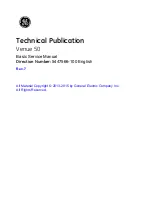
Instruction Manual VisGuard 2 E xtractive
Mounting
20
14265E/1
5.2.3
Selecting and laying the lines
CAUTION!
Deposits in supply lines over longer distances.
Depending on the line material, deposits can build up in the supply lines over longer di s-
tances.
Only use lines with smooth inner surfaces for sample transport.
Coarse inner surfaces cause major friction losses and provide ideal conditions for partic-
les to accumulate in the line.
Please note the following when laying the sample line:
We recommend using the gray, flame-retardant electrical hoses. As a rule of thumb, the
less joints and radii and the shorter the lines, the better the sample transfer.
Outdoor sample lines must be well insulated, protected against the weather and heated
when required so that the dew point cannot be undershot.
5.3
Additional components
5.3.1
Connection for external instruments (KZTN9)
An optional connection for external instruments KZTN9 can be integrated in the sampling
system. Using this connection, some of the sample is made available to other measuring i n-
struments in order to determine CO, NO
X
etc. The sampling system is thus used to a fuller
potential and the installation costs for additional instruments are justified.
The connection for external instruments KZTN9 is integrated in the sampling system using
hose connections. The detailed dimensions of this connection piece can be found in drawing
KZTN9-MB
.
5.3.2
Valve unit (ST2MP3)
The valve unit ST2MP3 is used on multiple sampling systems and ensures the correct alloc a-
tion of the sample to the measuring points. The samples from all measuring points flow con-
tinuously through the sampling system. Using two-way valves, a sample is branched off and
fed to the photometer for measurement.
The valve unit is fitted with corresponding mounting flanges and is installed directly to a wall
or stand as close to the measuring instrument as possible. The connection is made via hoses.
The corresponding dimension can be found in drawing
ST2MP3-MB
.
















































